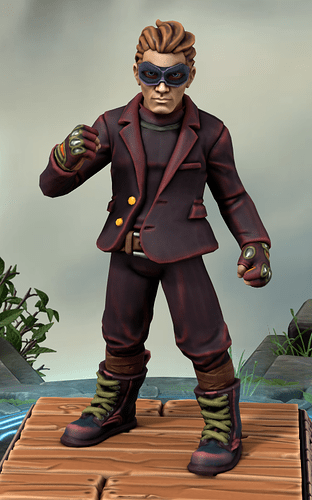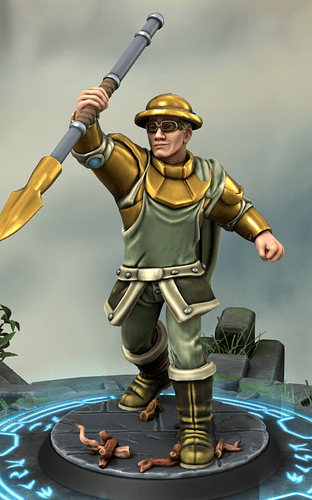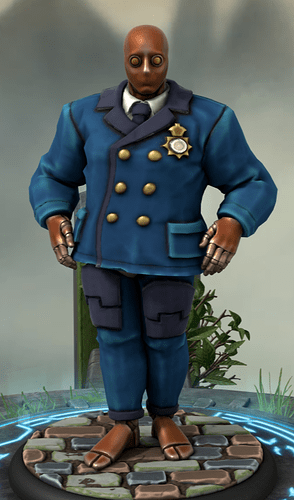Over on another forum, I started work on the publication history of a rival comics company. I hadn’t originally put it here, because I was a bit concerned about ongoing forum concerns about new material, but I think the new stuff is limited enough that it should be okay. (Mods, let me know if this is not the case.)
I’ll be updating twice daily until I catch up to the other forum, after which I’ll start updating five times a week alongside it.
Here is how the exercise plays out:
This game is going to be divided into two Major Phases, each of which is subdivided into Ages. The first phase is the Classic Phase, subdivided into the Golden Age, the Silver Age, and the Bronze Age. The second phase is the Modern Phase, subdivided into the Iron Age and the Diamond Age.
Each phase involves 40 heroes and 36 villains. Unlike previous runs, I’m not fully blocking myself out, because companies duplicate common archetypes. Instead, the following restrictions are in play:
- If I hit any given heroic Background, Power Source, Archetype, or villainous Approach, Archetype, Upgrade or Mastery four times in a given phase, it is blocked out completely, and any result that gets it gets the next available one up instead.
- I can’t have a heroic character duplicate a Background, Power Source, and Archetype combination that already exists in the current phase.
- I can’t have two heroic characters share the same Background and Power Source, Background and Archetype, or Power Source and Archetype within an Age.
- If a heroic character shares two of Background, Power Source, and Archetype with a character from a previous age, they must either be an updated version or a reboot of the previous age’s character. (I am allowed to update or reboot with fewer, but not required.)
Dice totals and Principles may not be quite how you expect them; I’m using a revised character creation process for heroes that I play with at my own tables. Since it’s a rival company, I figure they get rival character generation! 
The ages of Venture Comics are as follows:
- The Golden Age (1938 - 1957): Following the development of ten superheroes and nine of their villains.
- The Silver Age (1957 - 1971): Following the development or reboots of twenty superheroes and eighteen of their villains.
- The Bronze Age (1971 - 1986): Following the development of ten superheroes added to their Silver Age counterparts, and nine new villains.
- The Iron Age (1986 - 2004): Following a company-wide relaunch of twenty superheroes and eighteen villains.
- The Plutonium Age (2004-2014): A rather disastrous period of rapid reboots, relaunches, new #1 issues and bad decisions that will not be developed in full.
- The Diamond Age (2014-2022): The slowly growing reboot of the line following a series of disasters between 2004 and 2014 that saw the company nearly fail entirely, which follows a new or revamped set of twenty superheroes and eighteen villains.
In each age, I’ll start with a quick post giving an overview of the situation for Venture Comics. Then I’ll create the heroes, developing them into teams and solo titles, create a set of villains for them, and then write out the comics that they appear in. Venture Comics is a small publisher, which usually only had a single-digit number of comics titles at a time, possibly growing in the Bronze Age before struggling in the 80s. I think this’ll be a fun way to build a setting that I can do other things in later. It is also going to be massive. I’ve already finished the Golden Age, so you’ll be getting that at high speed, and I’m early in the Silver Age as we type.
Venture Comics: The Golden Age
Founded in 1938, Venture Comics initially sought to bring the popular world of pulp magazines to comics. They opened with four titles. Campfire Terrors was a horror comic aimed at preteens and young teens, telling scary stories that weren’t too gruesome. Celestial Travels was a pulpy science fiction anthology in the style of Buck Rogers, with a major character lead and a variety of backup adventures. Cryptic Trails was a classic adventure pulp, frequently about hidden corners of the world and magical or impossible realms hidden just outside the world. And Company Town was a noir anthology about the city of Ferristown, a thinly-veiled Detroit analogue ruled over by a ruthless industrialist with mob ties fairly clearly modelled as a mixture of Henry Ford and Thomas Edison.
The twin pressures of the rise of superheroes and the breaking out of war created pressures on the company, and a fifth title, Covert Tactics, was released in February 1940, alongside the first superhero of the Venture Comics line…
to be revealed later today, when I have time to format it!








